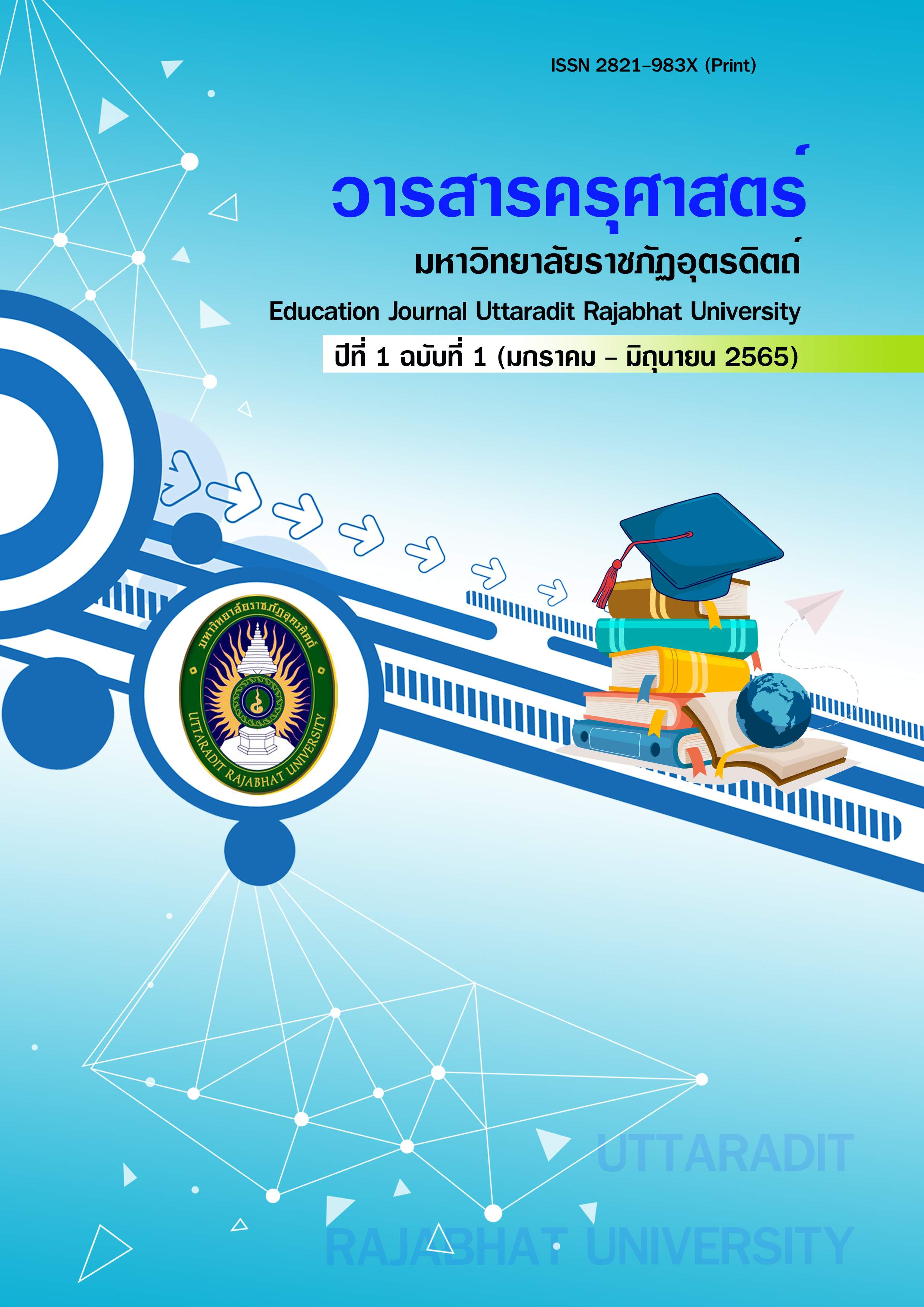Blended Learning in The New Normal Situation
Main Article Content
Abstract
This article is a synthesis of the concept of Blended Learning to connect teaching management to a new way of life or New Normal in applying blended learning to fill the gap between teaching Face to face learning and online learning. The authors has discussed the importance, types, styles, components, advantages and disadvantages of blended learning management for teachers to understand and use in a new normal during the corona virus epidemic situation. It can also be used as a guideline for the management of blended learning to be used in educational institutions under the context and support to promote efficiency and effectiveness for learners in the 21st century.
Article Details

This work is licensed under a Creative Commons Attribution-NonCommercial-NoDerivatives 4.0 International License.
Faculty of Education Journal Uttaradit Rajabhat University It is a medium for disseminating research results. Academic work Any opinions expressed in the article are solely the personal opinions of the author. Faculty of Education Uttaradit Rajabhat University and the editorial team does not necessarily have opinions that are consistent with those expressed in the article in any way. and is not considered the responsibility of the Faculty of Education Uttaradit Rajabhat University and editorial team
References
สุรศักดิ์ ปาเฮ. (2555). การเรียนรู้แบบผสมผสาน. แพร่: สำนักงานเขตพื้นที่การศึกษาประถมศึกษาแพร่เขต 2.
อภิชาติ อนุกูลเวช. (2555). การเรียนแบบผสมผสาน (Blended Learning ). สืบค้น 12 มิถุนายน 2564, จาก http://www.chontech.ac.th/_abichat/1/index.php/option.html Bernath, R. (2012). Effectives Approaches to Blended Learning for Independent Schools. Available February 24, 2021, from http://www.testden.com/partner/blended%20learn.html
Carman, J.M. (2005). Blended Learning Design : Five Keys Ingredients. Available February 26, 2021, from http://www.agilantlearning.com/pdf/Blended%20L.pdf.
Ginns, P. & Ellis , R. (2007). Quality in Blended Learning : Exploring the Relationship Between Online and Face-to-Face Teaching and Learning. Available February 19, 2021, from http://www.associatie.kuleuven.be/altus/seminaries/pdf.
Graham, C.R. (2012). Introduction to Blended Learning. Available February 23, 2021, from http://www.media.wiley.com/product_data/except/86/C.pdf.
Graham, C.R. ; Allen, S. & Ure , E. (2003). Blended Learning Environments : A Review of
the Research Literature. Unpublished Manuscript, Provo, UT.
Graham, C.R. & Dziuban, C. (2008). “Blended Learning Environments” in Spector, M.J. et.al
(Editors) Handbook of Research on Educational Communications and Technology.
(Third Edition). New York: Lawrence Erlbaum Associates.
Horn, B.M. & Staker, H. (2011). The Rise of K-12 Blended Learning. Unpublished Paper:
Innosight Institute.
Oliver, M. & Trigwell, K. (2005). “Can Blended Learning Be Redeemed?.” E-Learning :
Innosight Institute. Volume 2, Number 1, 2005 : 17–26.
Sharpe, R. ; Benfield, G. ; Roberts, G. & Francis, R. (2006). The Undergraduate
Experience of Blended Learning : A Review of UK Literature and Practice. Available
February 20, 2021, from http://www.heacademic.ac.uk/assets/documents/pdf.


